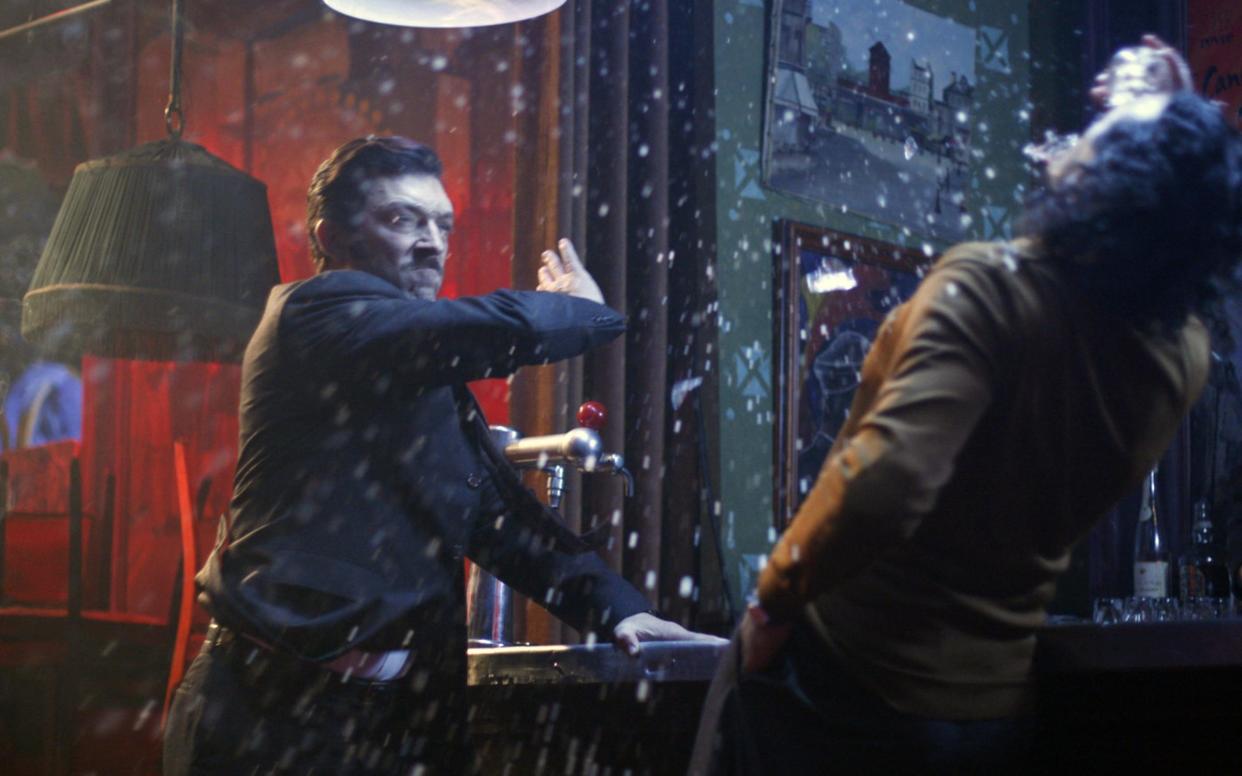Is gruesome cinema ever justified? This gangster flick is hard to stomach – and that's the point

- Oops!Something went wrong.Please try again later.
- Oops!Something went wrong.Please try again later.
Although Hollywood started the gangster film in the 1930s and 1940s, the French perfected it in the 1950s and 1960s. The acting was more subtle: the events depicted more credible, less theatrical, and less clichéd. But after the golden age of Jean Gabin and Lino Ventura, French cinema moved on, its films evolving as crime and society changed during the era of Mitterrand and Chirac.
Yet a real-life gangster from the French golden age, the bank robber, kidnapper and serial murderer Jacques Mesrine, was the subject of the epic biographical film Mesrine directed by Jean-François Richet in 2008, which although set in the 1960s and 1970s effectively updates the genre, in questionable but not entirely offensive fashion.
Mesrine was born in 1936 to a family depicted in the film – spread over two parts, titled Killer Instinct and Public Enemy No 1 – as respectable, middle-class and, in his mother’s case at least, disgusted by his refusal to earn an honest living. His father fears to show his disgust, being timid and overpowered by his narcissistic and psychopathic son, against whom he has no moral weaponry to deploy.
Be warned, this is a film for which one needs a strong stomach. Mesrine is depicted as a man not merely inured to violence, but addicted to it, after his service in the French army in Algeria during the troubles of the late 1950s and early 1960s. What the films do not depict is that the real Mesrine witnessed a massacre by German soldiers as a child, or that he was expelled from school for delinquency. It does show him in the army threatening to shoot the sister of a suspected terrorist in order to force him to speak, before shooting the suspect himself. It is an act of graphic violence that sets the tone for the film, showing an immediate difference from those of the golden age.
It is riveting, with the starring role acted immaculately by Vincent Cassel. The script moves at high velocity, the photography is superb and the supporting cast outstanding – notably Cécile de France as the gangster’s ruthless and rather terrifying moll, who in Bonnie-and-Clyde style becomes his partner in crime. Jailed for five years, she eventually realises that she cannot cope with the full psychopathy of the Mesrine approach to life. The violence cannot be said to be gratuitous: it is necessary if one is to understand just how vicious Mesrine was and, in turn, how morally deficient were those French who, in his heyday, saw him as some sort of Robin Hood.
Cassel effortlessly depicts the bravado, charisma and warped talent of the man: his various prison escapes, his capacity for disguise, his magnetic allure for women, his constant outwitting of the police not just in France but in Canada, where he operated for a time until he and his mistress were arrested. He augmented his legend while in Canada not merely by breaking out of jail but, having escaped, returning with an accomplice to try to facilitate a mass-breakout. What ensued is depicted on screen as resembling a small war.
He returns to France, acquires a new mistress, resumes robbing banks but ends up in France’s most impregnable jail, La Santé. Again proving truth is stranger than fiction, he manages to escape and Public Enemy No 1 moves to its denouement with a series of improbable, but true, events that infuriated the authorities who could not catch him: robbing the Deauville casino, escaping thanks to a family they held hostage, and then kidnapping a plutocrat for a massive ransom.
Meanwhile, he gives an interview to Paris Match and, thanks to his mastery of disguise, travels all over Europe: he reads the interview while in London in 1978. A journalist who was rude about him finds himself lured to a meeting on the promise of a further interview, only for Mesrine to shoot him. Mesrine’s accomplice deserts him at this point: he, too, has had enough.
Killer Instinct starts with Mesrine driving into an ambush after the police track him down; its sequel ends with the full carnage, Mesrine dead, covered in blood, his mistress injured and, most distressing of all, her pet poodle killed. Mesrine is, for all its gore, a landmark of French cinema.

